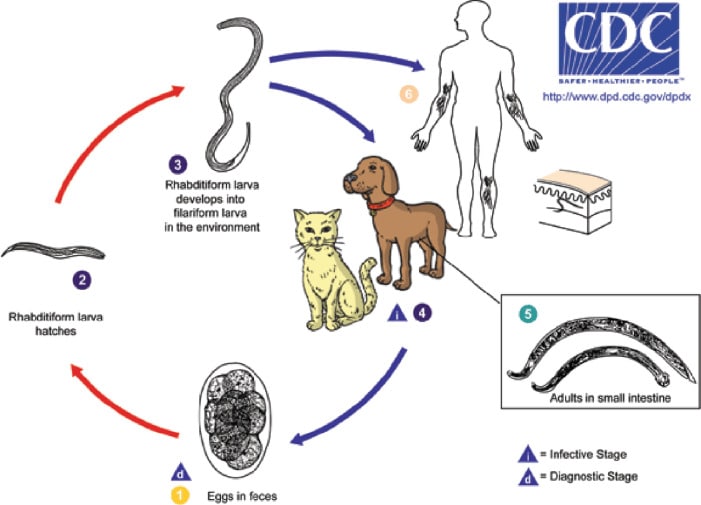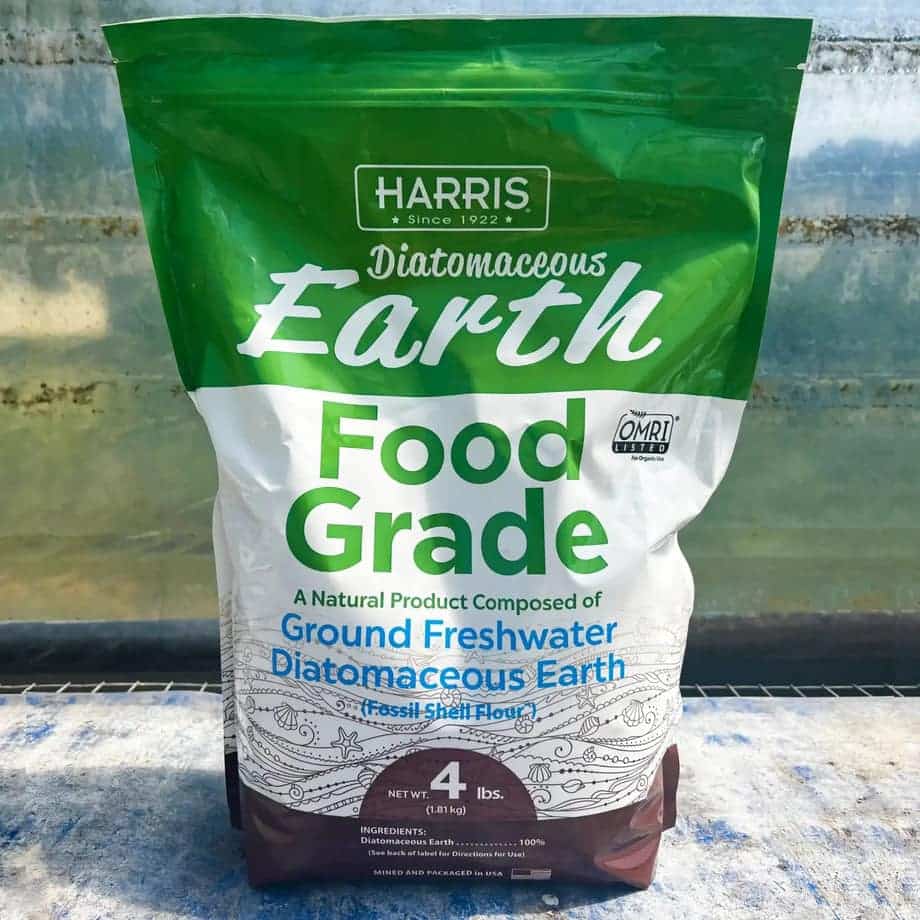Imagine a foe so small it’s nearly invisible to the naked eye, yet its impact on your health and that of your pets can be significant. Hookworms lurk unseen in the soil, especially in warm, moist environments, waiting to infect their hosts—humans and animals alike.
Hookworms enter a host’s body through the skin, often through the feet. In that case, normal yard activities like children playing barefoot, pets frolicking freely, picnics, and barbecues put you at risk of hookworms.
So, let’s explore the different ways on how to kill hookworms in yard below.
Understanding Hookworms
The first step towards preventing and killing the hookworms in your yard is understanding the enemy. This includes learning their biology, life cycle, and the health risks they pose. But first,
What are Hookworms?
Hookworms are small, thread-like worms that belong to the family Ancylostomatidae. They are parasitic, so they rely on a host organism for reproduction and survival. Hookworms use their hook-like mouthparts to anchor themselves on the host’s intestinal wall lining.
Hookworms come in many varieties, but the ones that affect humans and animals include:
- Necator americanus and Ancylostoma duodenale: Primarily infects humans.
- Ancylostoma caninum: Primarily infects dogs but can occasionally infect humans.
- Ancylostoma braziliense: Infects both dogs and cats and can also humans.
The Life Cycle of Hookworms
A hookworm’s life cycle begins from eggs and progresses through larval stages to adult worms. When adult female hookworms find their way into a host’s small intestines, they lay eggs, which are then passed out through the feces.
Eggs turn into larvae in the soil and go through different developmental stages. Infective larvae can penetrate the skin of a new host, migrate through the body, and eventually settle in the intestines to mature and reproduce.
Health Impacts
Once hookworms are inside the body, they cause various health problems, depending on the infection’s severity and the species involved.
- Humans
You may experience an itchy rash or dermatitis at the site of entry. The primary symptoms of hookworm infection are abdominal pain, diarrhea, and anemia, which occurs due to the loss of blood. If the infection becomes chronic, it leads to malnutrition, stunted growth in children, and cognitive impairment.
More severe complications like protein deficiency and respiratory issues can occur if the larvae migrate to the lungs.
- Animals
Your cats and dogs can get hookworms. Pets with hookworm infections may exhibit symptoms like diarrhea, vomiting, and a rough, dull coat. In severe cases, particularly in young or debilitated animals, hookworms can cause significant blood loss and lead to life-threatening conditions. Hookworm larvae can also migrate through the skin, causing skin issues like dermatitis.
Read More:
How To Identify Hookworms in Your Yard
Considering hookworms are so tiny that you can barely see them with your naked eye in the soil, how can you determine that you have these worms in your yard? Below is what you’ll need to do:
a) Check for Symptoms in Your Pets
One of the most telling signs of the hookworm presence in your home is the health of your pets. If you notice itching, rash, abdominal pain, diarrhea, and anemia in your pets, you may have hookworms in your yard.
b) Bare and Patches of the Lawn
Check your lawn for bare patches or areas of dead grass, as they could indicate high levels of hookworm larvae. Hookworms prefer warm, moist soil, so check under trees, bushes, and other shaded spots where the soil remains damp.
In addition, examine areas where your pets frequently relieve themselves.
c) Soil Conditions
The soil condition in your yard can give you clues about hookworm activity. These conditions are conducive to hookworm survival:
- Moisture Levels: Hookworm larvae require moist conditions to thrive. Your yard makes a prime spot for hookworms if it has consistently wet or poorly drained soil.
- Temperature: Hookworm larvae prefer warm temperatures with soil temperatures in the range of 70°F to 90°F (21°C to 32°C) ideal for their development.
d) Human Symptoms
Are you or your family members experiencing unexplained skin rashes or gastrointestinal symptoms after spending time in the yard? If so, check whether you’ve been exposed to hookworms.
e) Test For Hookworms
The above symptoms give a strong indication of the presence of hookworms in your yard. However, to confirm an infestation, do these:
- Veterinary Fecal Examination: Have your pet’s feces examined by a veterinarian for hookworm eggs.
- Soil Testing: Get a professional to test your yard soil for the presence of hookworm larvae.
How To Kill Hookworms In Your Yard
Now that you have a better understanding of hookworms and have confirmed their presence, all you have to do is kill them and reclaim your yard.
1. Treat Your Pets
You can not eradicate a hookworm infestation in your yard until your pets are free from these parasites. Visit your vet for treatment. The vet will check for hookworm eggs in your pet’s stool and perform blood tests to assess your pet’s anemia and overall health.
Your vet will provide the right treatment. Commonly administered medications for hookworms in pets include Mebendazole, Pyrantel Pamoate, and Fenbendazole. Adhere to your veterinarian’s dosage recommendations and treatment schedule.
Moreover, give your pet a high-quality, nutritious diet to support their recovery and overall health and ensure they have access to fresh water at all times.
3. Clean Up Pet Feces in The Yard
Remove pet feces from your yard promptly because the hookworm eggs will slip into the soil the longer they stay in your yard. Develop a habit of cleaning after your pet as soon as they defecate in the yard. Also, walk through your yard methodically to ensure you don’t miss any spots.
Pick up your pet’s feces with a scoop or shovel, place it in a waste bag, tie the bag securely to prevent leaks, and discard the bagged waste in your regular trash bin. After cleaning up, disinfect your scoop or shovel.
In addition, spread diatomaceous earth on the spot where you removed the feces to kill any hookworm eggs that may have escaped.
Note
Always clean and disinfect your hands after handling pet feces.
4. Spread Diatomaceous Earth
Your pets can get re-infected with hookworms even after successfully treating them if you don’t kill the hookworms already in your yard. Since hookworm eggs can live in the soil for 3-4 weeks before dying, there’s plenty of time for a reinfection and soil damage to occur.
You can solve this problem by spreading diatomaceous earth in your yard. This will dehydrate and kill the hookworm eggs. Spread the powder, especially in areas your pet frequently poops and spots with conditions perfect for hookworm survival.
Moreover, pay attention to your lawn’s bare or thin areas. When applying dry diatomaceous earth, aim for a light dusting rather than thick clumps.
While often applied dry, you can do a wet DE application. For this approach, mix diatomaceous earth with water to create a slurry and apply it in your yard with a watering can or garden sprayer.
5. Spread Boric Acid
Spread 10 pounds of boric acid for every 1000 square feet of dirt in your yard to completely kill hookworms. While boric acid is lethal to hookworms, it also harms grass and plants.
Therefore, use it in your yard’s rocky areas and reserve it for extreme hookworm infestations. This solution works like diatomaceous earth— dehydrating the pest.
6. Apply Salt Brine
Salt brine dehydrates hookworm larvae and eggs, killing them. Mix salt with water to make salt brine. Salt ruins grass and plants, so this solution best suits the paved surfaces in your yard where hookworm eggs commonly hide.
Pour a gallon of saltwater for every 10 square feet of paved surface and use a hard brush to scrub the solution, ensuring the salt brine penetrates the surface and seeps through all the cracks. Salt brine will kill the hookworms in these areas, keeping them from spreading to the green parts of your yard.
6. Environmental Control
Increasing the amount of sunlight your yard gets can help kill hookworm larvae, as they cannot survive intense heat. So, trim back trees and bushes to eliminate shaded areas and clear overgrown grass and vegetation to minimize moisture retention.
Moreover, minimize or stop watering your yard to allow the soil to dry out.
7. Prevention Measures
The measures below will help prevent future hookworm infestations.
- Keep your pets on a regular deworming schedule per your vet’s recommendation.
- Fence your yard securely to keep stray animals out.
- Bathe your pets regularly and clean their paws after going outdoors to minimize the risk of bringing larvae into the house.
- Add organic matter to your yard soil. Healthy soil with a diverse microbial population is less likely to harbor hookworm larvae.
- Protect yourself from hookworms by wearing shoes and gloves when gardening or walking in your yard.
Final Remarks
Ultimately, your efforts to kill hookworms in your yard must involve targeting the worms themselves and their breeding grounds in the soil. Also, keep in mind that preventing hookworm infestations is as vital as treating an existing one. Without hookworms, your pets will be healthier, your family safer, and your outdoor spaces more enjoyable.

I’m Mike Hyle, an exterminator with 7+ years of experience handling all sorts of pests, including mice, cockroaches, bed bugs, and termites. I also write for Pest Solutions DIY blog to share my knowledge and help homeowners keep their homes pest-free. Outside work, I enjoy hunting, snowshoeing, and exploring nature. Check out my blog for helpful pest control tips!




